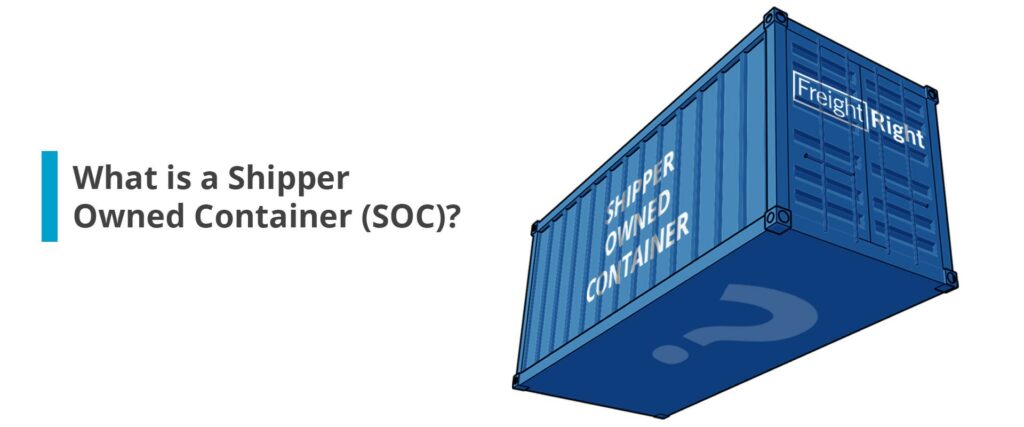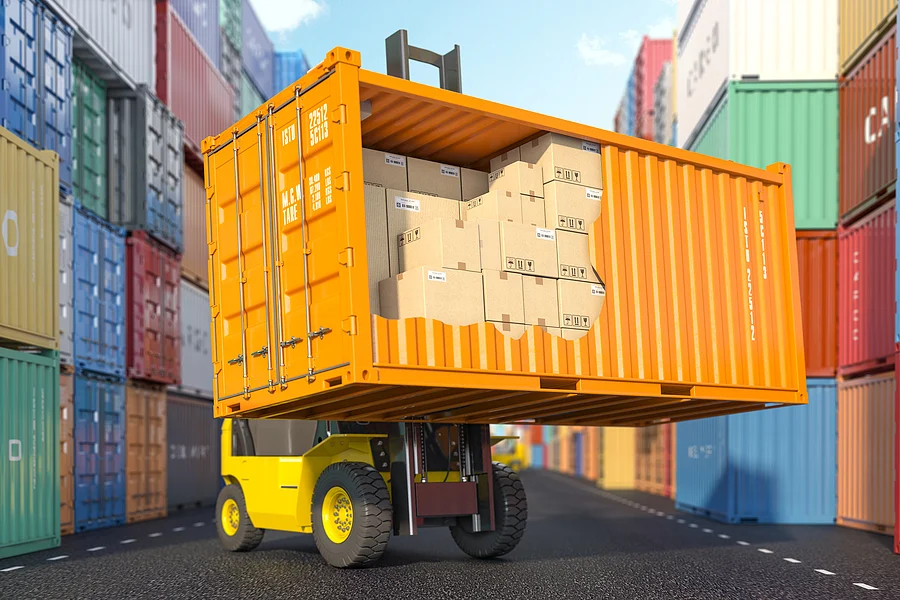Shipper’s Own Container (SOC), which is a common type of container used in international freight shipping. In this case, the shipper (owner) owns his own container instead of renting a standard container from a shipping line.
Reasons for using shipper’s Own Container
- Special cargo requirements: some goods may have a special size, shape or need special container equipment, at this time the consignor may choose to provide their own container to ensure proper packaging and transportation of goods.
- Economic factors: in some cases, the consignor may think to buy or have their own container more economical, especially in the case of frequent and large-scale transportation of goods.
- Flexibility: have their own container makes the consignor can better control the process of transportation of goods, including better control of loading and unloading of goods time and place.
It is also common for shipping companies to accept shipper’s own container because it provides them with more flexibility and choice. In such cases, shipping lines usually follow certain negotiated or standard rules for accepting and handling shipper’s own container.
If you want to learn more about container freight rates, you can click on this article:
Xiongda can provide container shipping from China to USA for you.We work with a wide range of shipping lines and can provide you with FCL and LCL shipping to USA.

What is COC
The term “COC container” is an abbreviation for Carrier-owned container. When the carrier (container liner or shipping line) owns the container and controls most of the transportation chain, it is essentially called a COC.
Difference between shipper’s Own Container and COC
The main difference between a SOC and a COC is that a SOC is owned and operated by the shipper, while a COC is owned and operated by the carrier. In addition to this, there are some subtle but important differences between the 2:
- A captive container shipowner’s container
- Owned and operated by the shipper; owned and operated by the carrier;
- Used to transport cargo over long distances; can be leased to a variety of consignees;
- Does not incur demurrage and demurrage charges. incurs demurrage and demurrage charges.
Containerized containers give you more freedom and independence than owner-operated containers, but there may be situations where you don’t need to use a container to save money.
When do I use shipper’s own container?
A duffel is very flexible and can be used by shippers anytime, anywhere. However, the more time and effort it takes to prepare a self-storage container, the less net cost-effective and time-efficient it is. There is a lot of work involved in using a captive container, so the owner’s container is more advantageous if it is used in some standard transportation.
If you don’t want to just read these text interpretations, you can click on the video below to help you understand more quickly about shipper’s own container:
Pros and cons of using shipper’s Own Container
Pros
Flexibility
Owners can choose, prepare and control their own containers according to the special nature of the goods. This allows them to better adapt to a variety of cargo types and transportation needs.
Cost control
Have their own container can help owners better control costs. They don’t have to pay the box rental fee of shipping company or leasing company, and they can better control the transportation cost in the process of transportation.
Cargo safety
Shippers can better monitor the packaging and safety of goods to ensure that they are properly handled throughout the transportation process.
Flexible loading and unloading time
Shippers can arrange the loading and unloading time more freely without being restricted by the shipping company or leasing company.
Disadvantages
The cost burden
Purchase and maintenance of their own container may lead to certain initial and operating costs. This may include purchase, maintenance, repair and management costs.
Empty container management
If the shipper can not keep their containers throughout the transportation cycle to maintain full use, may lead to an increase in transportation costs of empty containers back.
Liability and risk
The use of SOC containers may increase the liability and risk of cargo owners. They need to be responsible for the maintenance, security and compliance of the container, and to clarify these responsibilities in the contract of carriage.
Transportation restrictions
In some routes or transportation networks, the shipping company may impose some restrictions on SOC containers, which may limit the owner’s choice and flexibility.

When considering the use of shipper’s own container services, cargo owners should weigh these pros and cons, and develop appropriate strategies according to the specific circumstances. A thorough understanding of the relevant regulations and contract terms, and adequate communication with the shipping line and other relevant parties are also essential.

